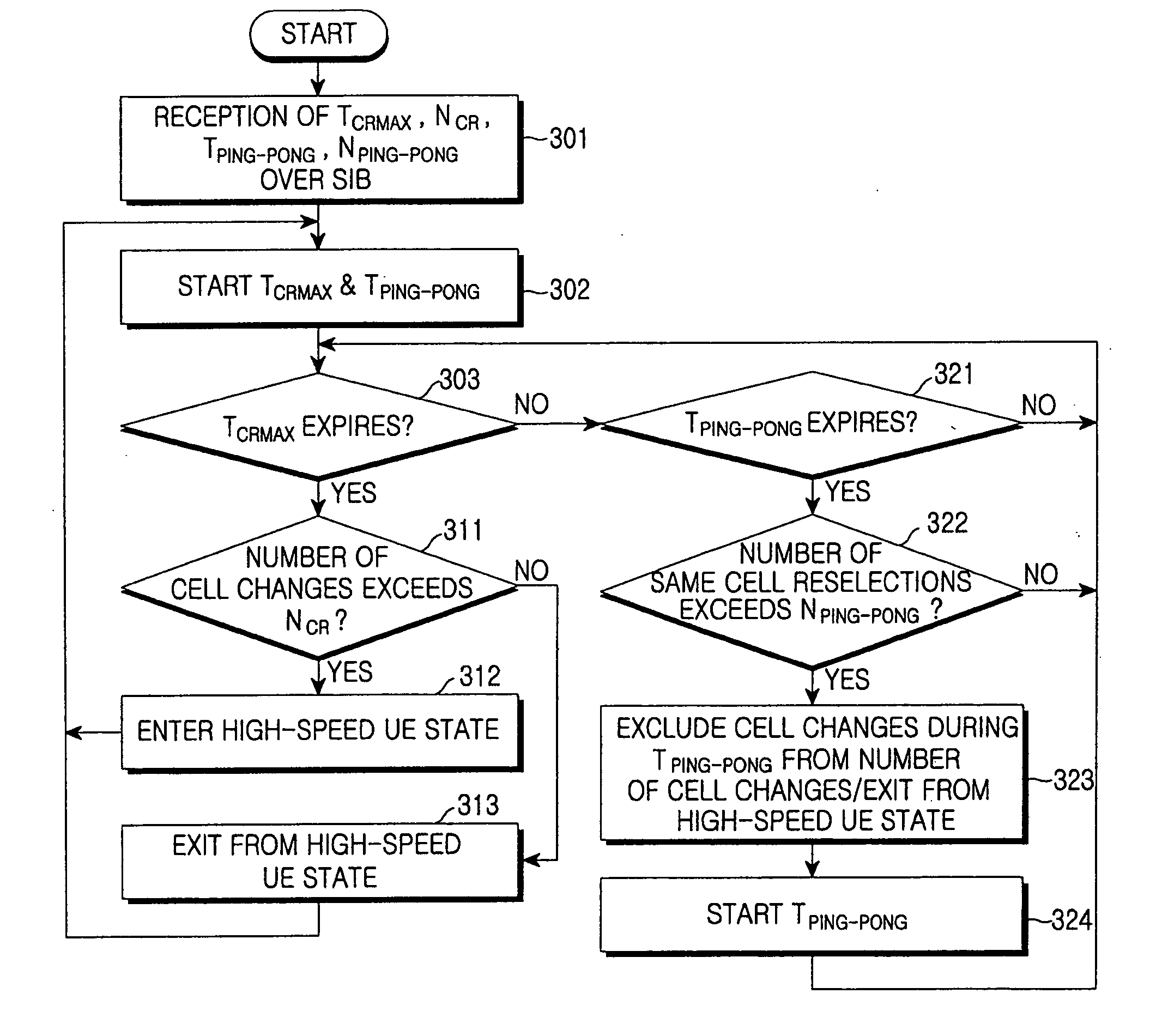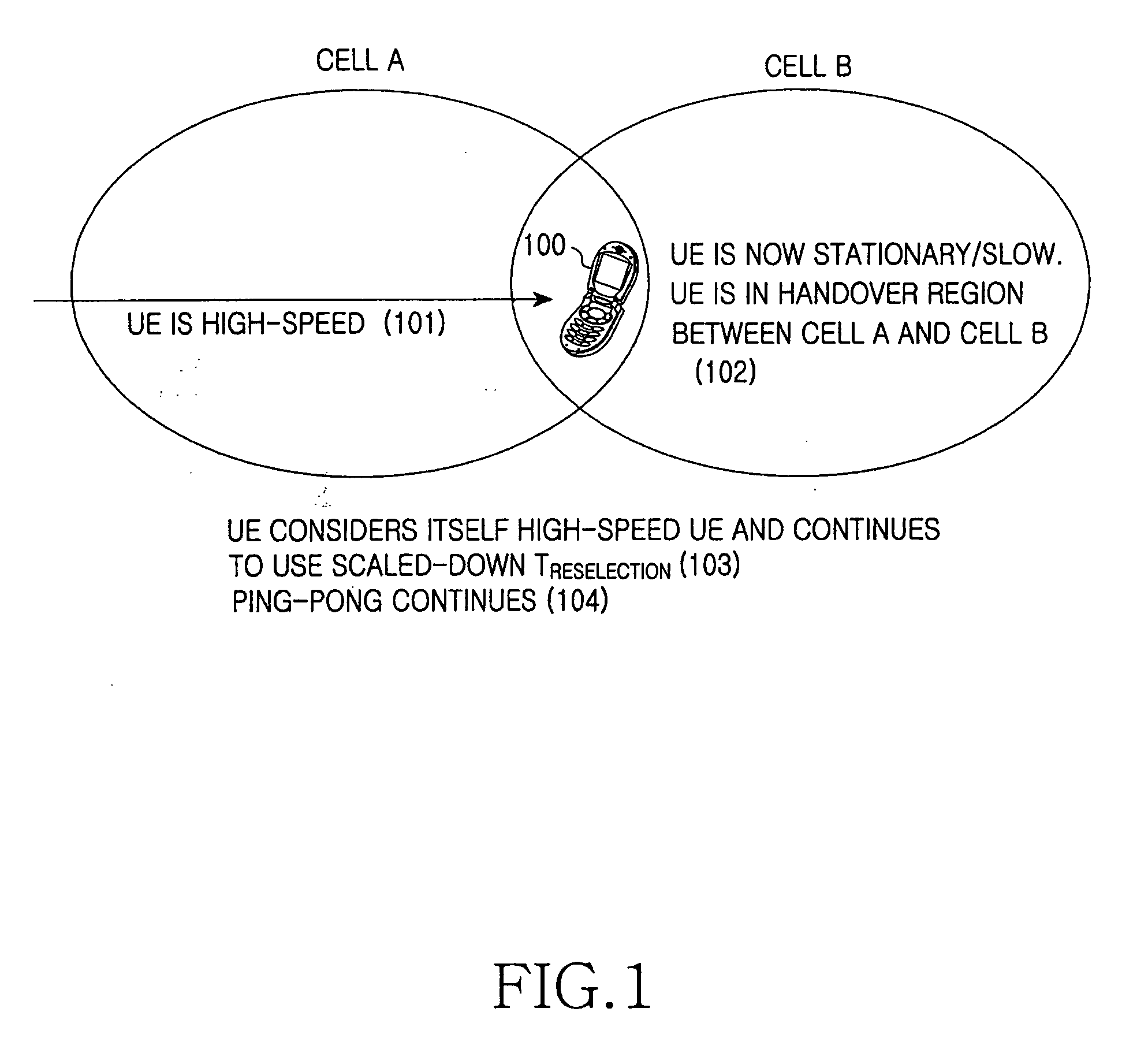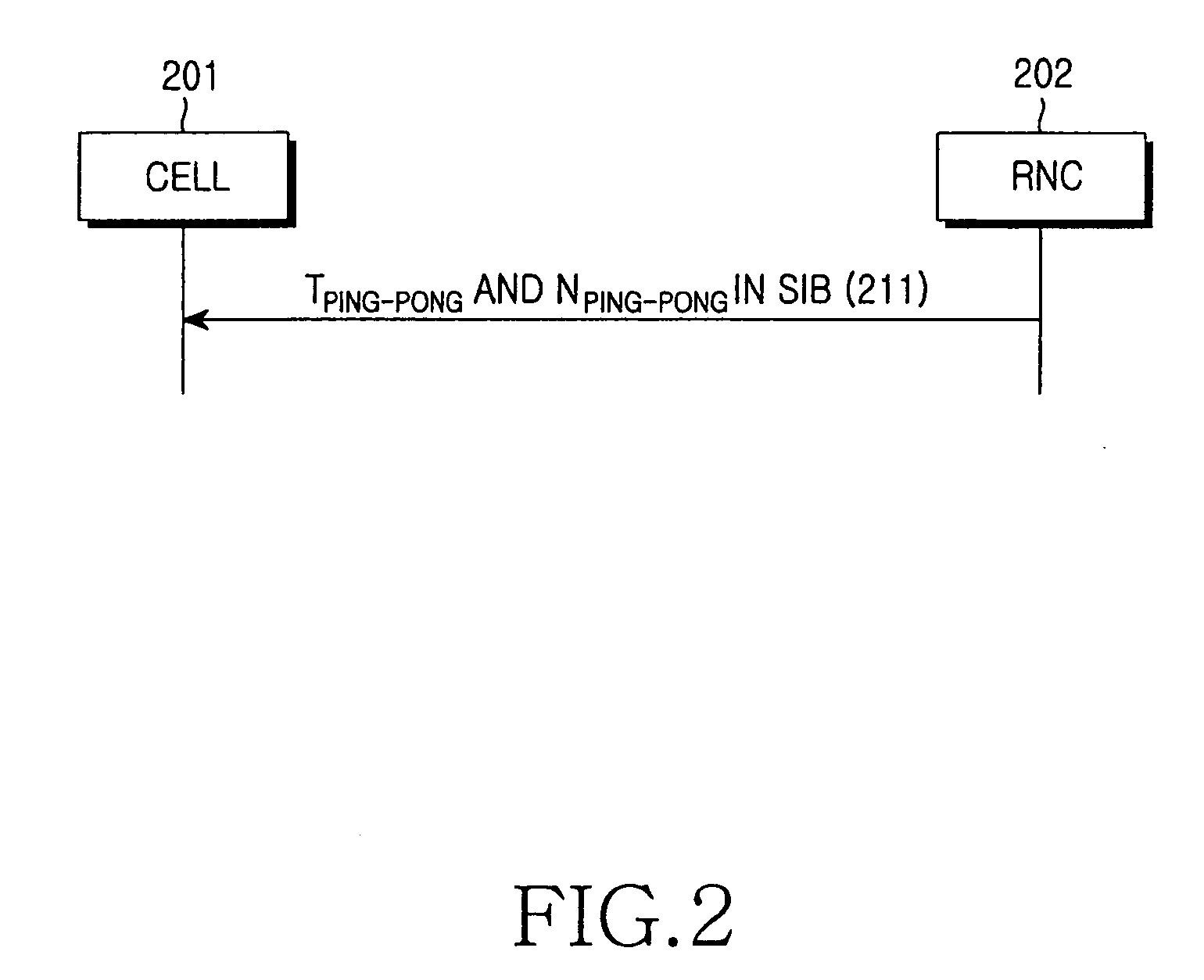Cell reselection method and apparatus for preventing ping-pong in a mobile communications system
a mobile communications system and cell technology, applied in electrical devices, network topologies, radio transmission, etc., can solve the problems of seriousness of ping-pong effect, and achieve the effect of accurate determination
- Summary
- Abstract
- Description
- Claims
- Application Information
AI Technical Summary
Benefits of technology
Problems solved by technology
Method used
Image
Examples
first exemplary embodiment
[0048]FIG. 2 is a diagram illustrating an exemplary signaling flow according to an embodiment of the present invention. Reference numeral 201 denotes a serving cell for a UE and reference numeral 202 denotes the CRNC of the cell 201.
[0049] Referring to FIG. 2, the CRNC, or simply RNC 202 sends appropriately set Tping-pong and Nping-pong values in an SIB to the cell 201 in order to enable UEs to decide about the occurrence of ping-pong which may be caused by a scaled-down Treselection value in step 211. The cell 201 broadcasts the SIB with Tping-pong and Nping-pong. The UEs in idle mode, URA / CELL_PCH mode, and URA / CELL_FACH mode within the cell 201 receive and store the broadcast Tping-pong and Nping-pong. While not shown, the SIB further comprises other parameters by which to determine cell reselection, particularly Tcrmax and Ncr. The Tping-pong and Nping-pong values are preferably shorter than Tcrmax and Ncr, respectively.
[0050] If the UE reselects to the same cell more than Npi...
second exemplary embodiment
[0057]FIG. 4 is a diagram illustrating an exemplary signaling flow according to another embodiment of the present invention. Reference numeral 401 denotes a serving cell for a UE and reference numeral 402 denotes the CRNC of the cell 401.
[0058] Referring to FIG. 4, the CRNC, or simply RNC 402 sends appropriately set Tping-pong or Nping-pong values in an SIB to the cell 401 in order to enable UEs to decide about the occurrence of ping-pong which may be caused by a scaled-down Treselection value in step 411. The cell 401 broadcasts the SIB with Tping-pong or Nping-pong. The UEs within the cell 401 receive and store Tping-pong or Nping-pong. While not shown, the SIB further comprises other parameters by which to determine cell reselection, particularly Tcrmax and Ncr.
[0059] In operation, if the UE receives Tping-pong and selects the same cell at least twice for Tping-pong, it excludes the number of cell changes occurred for Tping-pong from the number of cell changes counted for Tcrma...
third exemplary embodiment
[0070] In the following exemplary embodiment, only a UE operation is defined rather than signaling of new parameters for detecting ping-pong.
[0071]FIG. 7 is a flowchart illustrating an exemplary UE operation according to a third embodiment of the present invention.
[0072] Referring to FIG. 7, the UE receives Tcrmax and Ncr in an SIB from the serving cell in step 701, and starts a timer set to Tcrmax in step 702. In step 703, the UE monitors the expiration of Tcrmax. If Tcrmax has not yet expired, the UE determines whether a cell reselection has occurred in step 704. If it has not, the UE returns to step 703. If it has, the UE determines whether the same cell has been selected repeatedly for Tcrmax in step 705. If the same cell reselection has been repeated, the UE excludes the number of cell reselections to the cell from the number of cell changes for Tcrmax in step 706. If the same cell is selected once for Tcrmax, the UE includes the number of cell change to the cell in the cell ...
PUM
 Login to View More
Login to View More Abstract
Description
Claims
Application Information
 Login to View More
Login to View More - R&D
- Intellectual Property
- Life Sciences
- Materials
- Tech Scout
- Unparalleled Data Quality
- Higher Quality Content
- 60% Fewer Hallucinations
Browse by: Latest US Patents, China's latest patents, Technical Efficacy Thesaurus, Application Domain, Technology Topic, Popular Technical Reports.
© 2025 PatSnap. All rights reserved.Legal|Privacy policy|Modern Slavery Act Transparency Statement|Sitemap|About US| Contact US: help@patsnap.com



